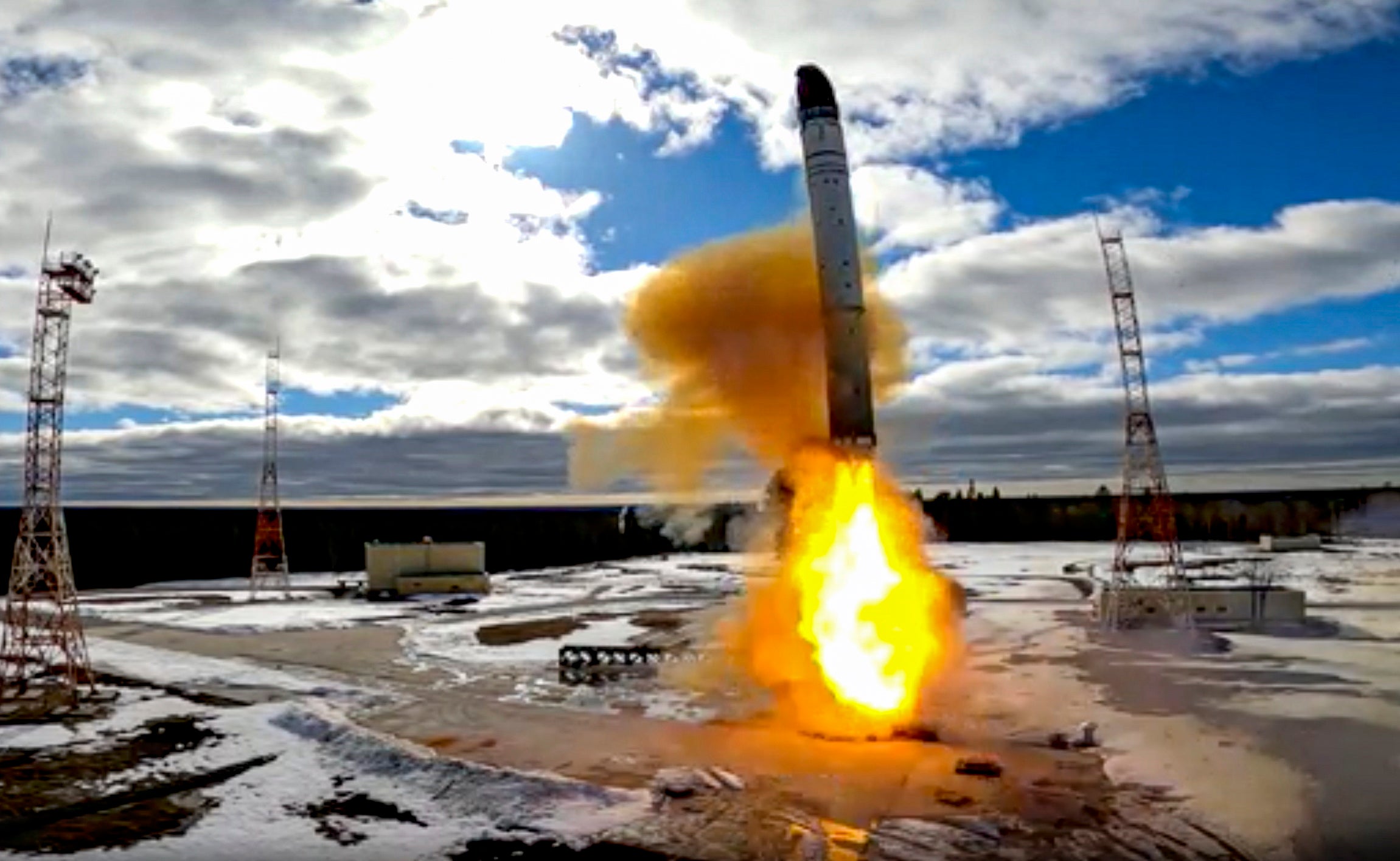What is Russia’s ‘Satan II’ hypersonic intercontinental nuclear missile?
Vladimir Putin hasa repeatedly tried to talk up the specifications of the RS-28 Sarmat
Russia has said that Moscow’s RS-28 Sarmat intercontinental ballistic missile (ICBM), nicknamed “Satan II” – capable of carrying ten or more nuclear warheads – has been rolled out on “combat duty”.
The head of Russia's space agency Roscosmos said that the missiles had entered active duty, the state-run news agency RIA reported. In June, Russian President Vladimir Putin said that Sarmat missiles would be deployed for combat duty "soon".
Prior to that, defence committee deputy chairman Aleksey Zhuravlyov had used it as a threat when he was interviewed by state broadcaster TV Russia 1 in May regarding Sweden and Finland’s aspirations towards joining Nato in light of Russia’s invasion of Ukraine. Finland joined the alliance earlier this year, while Sweden is still waiting to be ratified.
Mr Zhuravlyov claimed that Moscow could unleash Satan II to strike back at those nations and at the UK and US, which the Putin regime regards as the key organising forces behind Nato.
“If the United States threatens our state, it’s good: here is the Sarmat for you, and there will be nuclear ashes from you if you think that Russia should not exist,” he said.
“We can hit with a Sarmat from Siberia, and even reach the UK. And if we strike from Kaliningrad... the hypersonic’s reaching time is 200 seconds – so go ahead, guys.
The Sarmat ICBM measures approximately 116 feet in length, weighs 220 tonnes and can carry 15 light nuclear warheads at once, arranged as Multiple Independently Targetable Re-Entry Vehicles (MIRVs), meaning a single rocket can hit an array of targets at once.
The missile was developed as a successor to the original “Satan” ICBM, otherwise known as the R-36 or Voevada, which dates from the Soviet era and could carry only 10 warheads and cover a range of 6,340 to 9,940 miles, compared with Satan II’s superior 6,200-11,180 miles, according to US Center for Strategic and International Studies data.
Mr Putin has repeatedly spoken about the “Satan II” missiles, saying that “make those who, in the heat of frantic, aggressive rhetoric, try to threaten our country, think twice”.
He has claimed that the missile is unlike any available to rival superpowers and that all of its components are manufactured domestically, meaning Russia is not dependent on foreign partners in its production.
Russia has made repeated, barely veiled nuclear threats against its European enemies since the invasion of Ukraine commenced on 24 February 2022, with state television presenter Dmitry Kiselyov declaring at one point that the Sarmat was “capable of destroying an area the size of Texas or England”.

Britain has previously dismissed such talk as empty sabre-rattling, with Julian Lewis, chair of the House of Commons’ Intelligence and Security Committee, saying: “Russia and the Western nuclear states have had the ability to annihilate each other ever since they acquired strategic nuclear bombers, followed by intercontinental ballistic missiles, over 60 years ago.
“Putin adding this new missile to his pre-existing ‘overkill’ capability makes absolutely no difference to the effectiveness of our Trident nuclear deterrent submarines.”
Russia’s defence ministry has admitted that its forces have fired hypersonic ballistic missiles in Ukraine, claiming to have destroyed a fuel depot in the Black Sea city of Mykolaiv and an underground ammunition store in western Ivano-Frankivsk.
Ukraine has confirmed that those targets were hit but has not specified what weapons were used.
Hypersonic missiles like the Kinzhal (Dagger) rockets allegedly being deployed by the Russian Air Force are thought to represent the next generation of arms because they can travel at exceptionally high velocities – up to ten times the speed of sound, which is around 8,000mph.
By comparison, a subsonic cruise missile like the US Air Force’s Tomahawk rocket moves at a relatively sluggish 550mph.
Military analyst Pavel Felgenhauer has argued that the true value of Russia’s menacingly-named modern arsenal, even beyond reaping destruction at ground level, is “giving a certain psychological and propaganda effect”.
That is to say, seeking to inspire fear.
Join our commenting forum
Join thought-provoking conversations, follow other Independent readers and see their replies
Comments


Bookmark popover
Removed from bookmarks